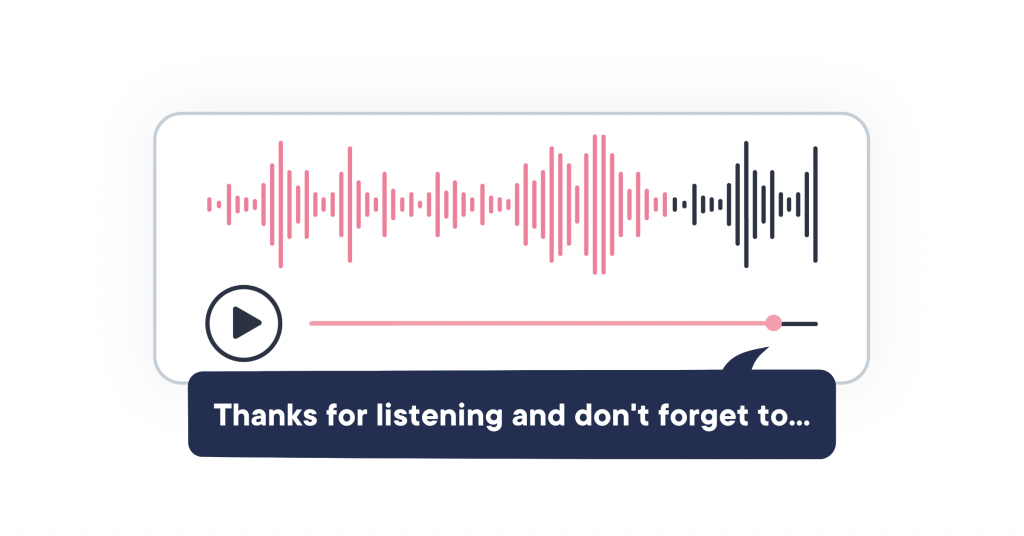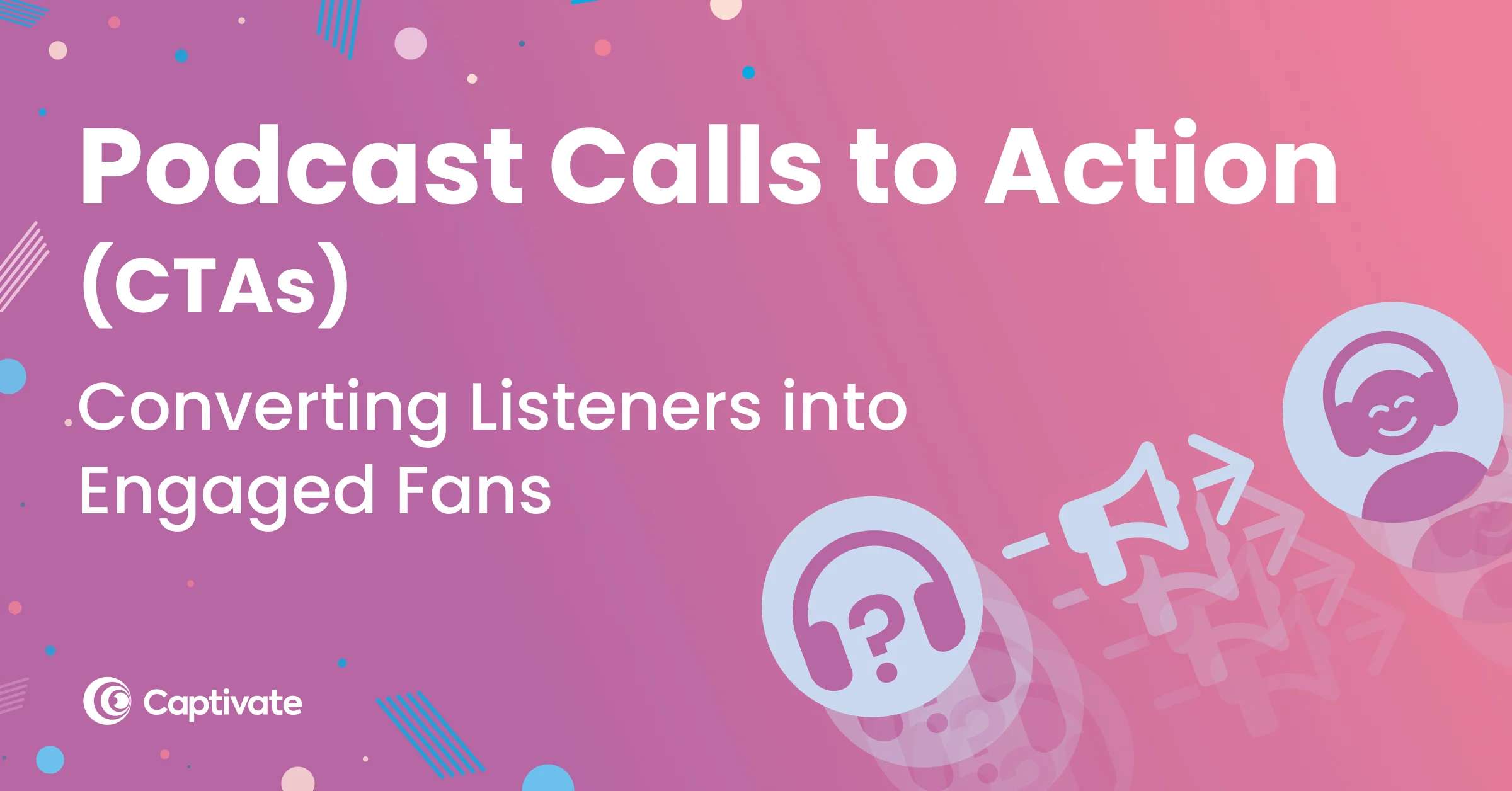There’s a constant sense of progression when you’re planning to launch a podcast. If you’re a complete beginner, then, chances are, you’ve been learning everything from how to record and edit audio, to how to upload and publish it.
There’s the choosing of things like artwork and music. The getting your website ready. The planning and recording of your very first episode.
Throughout all this, you feel productive, like you’re constantly moving forward. Finally, you hit publish. Your podcast is out there for the world to hear.
So, what next?
Tumbleweed, usually. For most people, it’s just a big feeling of anti-climax.
Unless you’ve come into podcasting with a large pre-existing audience, your download stats will be nothing like the numbers you’re used to seeing on social media, or on platforms like YouTube.
Initial listener feedback (close friends and family aside) will likely be non-existent. Three or four days after hitting publish, you might start to think, “what was the point in all that hard work?”.
Don’t despair, though. This is all very normal. And, it often leads to the most common mistake made by new podcasters – giving up too early.
In this article...
Remember: Your Podcast Is Not a Viral Video
Everyone is used to instant feedback online these days. Videos can go viral in minutes. Social media posts can immediately rack up thousands of ‘likes’. A podcast is a different thing entirely though. Podcasting is long-form content. Its growth is a slow burn. When that growth gains momentum, the impact is deeper. Podcasts are powerful because they become part of their audience’s habits.
Ask any podcaster who started out with no audience. They’ll tell you they spent their first months (or even years) feeling like they were talking into the void. If this feels like you at the moment, rest assured that you’re not wasting your time. There will be listeners, gradually making your show part of their listening habits, and buying into what you do.
The point is simply not to expect the world to change overnight. Instead of hitting refresh on your download stats and bemoaning the lack of activity, move your focus towards creating your next episode, your next 5 episodes, and your next year’s worth of content.
Here are easy 3 ways to keep that pre-launch momentum going.
1. Pick the Low Hanging Fruits: Calls to Action
Whilst “keep creating great content on a consistent basis” is the most obvious advice for growing your podcast, it’s far from the only advice.
There are a few things you can implement from day one that’ll give your show a much better chance of growing.
Loads of podcasters (even the experienced ones) miss a trick when it comes to growing their content. They don’t fully take advantage of their calls to action at the end of each episode. There’s no Buzzfeed-style, “this one simple trick” tip to boost audience numbers. But, if there were, this would be it.
Think about it – you’ve just served your listener an episode’s worth of content. Depending on your topic, you’ve likely entertained them, motivated them, or helped them learn something. Anyone who’s still listening to the very end is going to be engaged. If you’re not asking them to hit subscribe, or to share the show, then you’re missing out on a big opportunity.
Getting a listener to subscribe on their listening platform of choice means they’ll always get new episodes delivered to them automatically. So, sell that benefit to them. In some instances and platforms, it can also help with things like search rankings and chart positions, too.
Also, you might hear a podcaster wrap up an episode by saying something like, “if you’ve found this useful, can you think of another person you know that would really benefit from it? If so, please share it with them.” It sounds simple enough, but if every second listener is going out there and finding you new listeners each episode, the numbers really start to add up.
Now, think of how powerful that can be when you have a back catalogue of 30, 50, or even 100 episodes, many of which close up in the same way. Do this, and your download numbers will never plateau.

Captivate makes this process even easier, too. Features like our embedded Calls to Action player buttons and single subscription links can be used together for great effect when it comes to listeners sharing and subscribing to your show.
2. Set Achievable Milestones
Setting goals is a good way of keeping yourself focused, driven, and moving forward. But, if you’ve only released your first episode, and your goal is to hit a million downloads and quit your day job, you’re going to feel disappointed.
Sure, set a big overall goal like that. But don’t look at this as the next step. Instead, set some short term and achievable milestones, that give you that sense of progression.
An example could be hitting your first 100 downloads. It could be getting your first piece of listener feedback. Or, it could be picking up your first supporter on Patreon. These things on their own won’t change the world. But, they’re still important achievements that are worth celebrating.
Podcasters set and track milestones in all sorts of different ways. Some choose to add artificial deadlines in there too. If that’s something you feel would help keep you motivated, then great. Just don’t be too hard on yourself if you “fail” at any point. If you don’t hit a certain milestone by a certain time, ask yourself why. Were there genuinely things you could’ve done better? Or were you simply asking a bit too much when you set this target? Don’t dwell on this too long. Learn what you can from it, re-adjust accordingly, and get back to work.
3. Remember Why You’re Doing This
Back in those heady pre-launch days of planning your podcast, you likely uttered the words “I want to make this podcast because….”. This is your key motivation.
Another article we think you'd like...
Reading Time: < 1 minute Can podcasts be private? What is a private podcast and why create one? Here at Captivate we offer private podcasts but with one HUGE difference.
Running a podcast isn’t without its challenges. We’ve already covered that common feeling of anti-climax that happens post-launch. That period when everything seems to go a bit quiet, and a bit flat. There will also be times when things don’t go to plan. Maybe a piece of equipment breaks. Or the audio messes up on an important interview. Or you reach a point where you feel like there aren’t enough hours in the week to spend working on your show.
No matter what the latest struggle is, the thought of quitting can often look like an easy and appealing one. You could simply stop doing the podcast, and none of this would be an issue.
In moments like this, it’s useful to remember the reasons that motivated you to start doing the show in the first place. This will always vary from podcaster to podcaster, but it’s important not to lose sight of the bigger picture when you find yourself bogged down in the minutiae of running a podcast. If you’ve got as far as to record and publish an episode, then you’ve done all the groundwork. It’d be a real shame to give up at this stage.
What Next?
Hopefully, that’s been some useful guidance towards navigating those difficult early days of your podcast’s life.
Nowadays, there are plenty of tools and resources out there to make life easier for you, too. I mentioned Captivate’s embedded Calls to Action and Single Subscription Link features. Those only scratch the surface of the amount of growth-oriented tools they have available for podcasters.
At The Podcast Host we have 600+ articles covering every possible “how-to” aspect of podcasting, from planning to launch, to promotion and monetisation.
We also run our ‘Podcast Maker’ web app Alitu, which is designed to save podcasters time and energy learning the ins and outs of podcast production. Alitu automates all of this for you, meaning you can focus more time on the stuff that matters. And on top of that, you can use it to publish your episodes directly to Captivate, too!


















